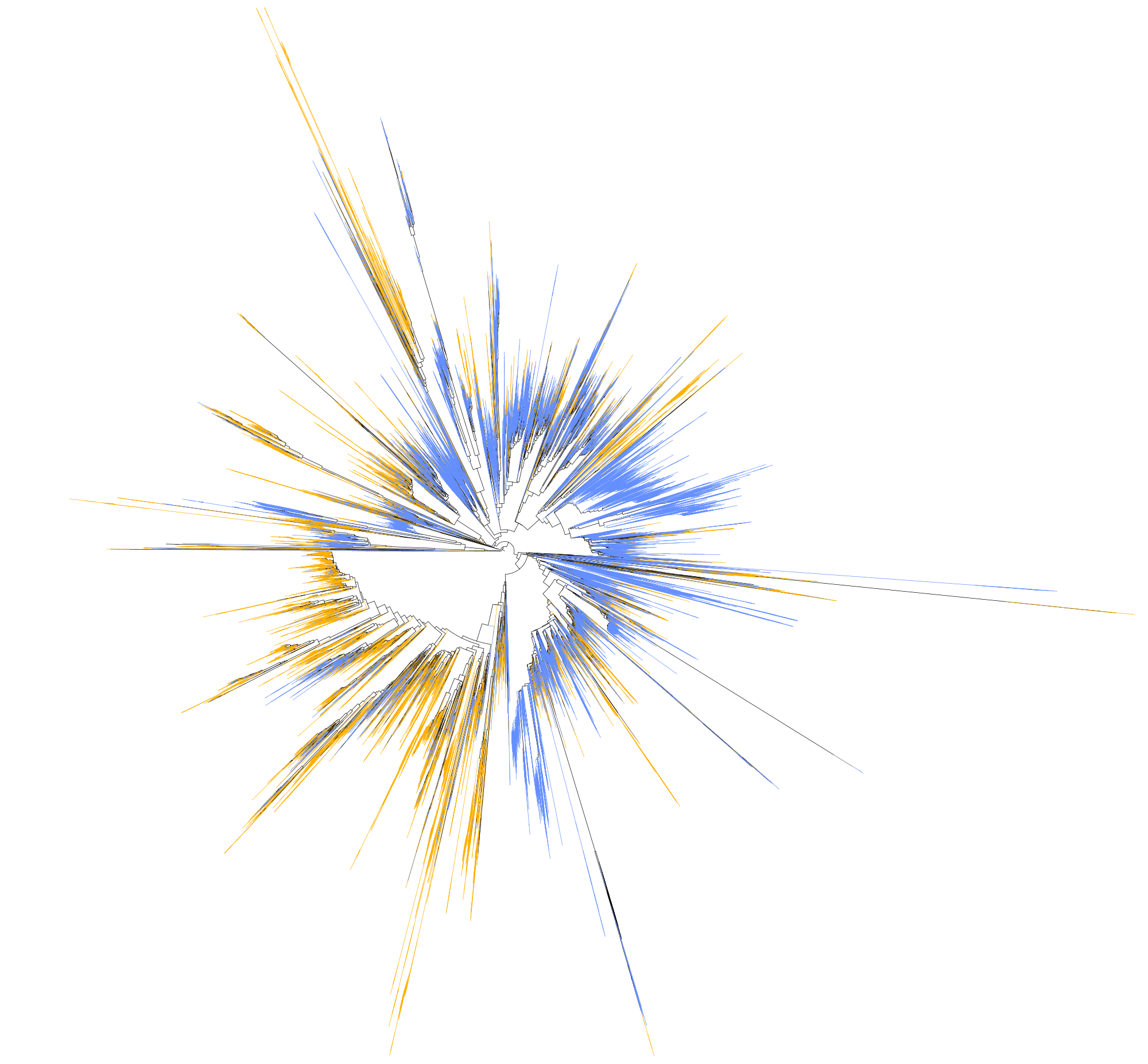Summary#
Step 1. Select your species carefully, both the ingroup and the outgroup, depending on your scientific question.
Set the variables:
FASTA="file.fasta"
ALIGNED=${FASTA/.fasta/_align.fasta}
FILE=${ALIGNED/.fasta/_trimed.fasta}
OUTPUT="test1"
THREADS=2
BS=100
MEM="2GB"
Step 2. Align the sequences:
mafft $FASTA > $ALIGNED
Step 3. Manual check of the alignment if unsure of the quality of the sequences before trimming:
trimal -in $ALIGNED -out $FILE -gt 05
Step 4. Run a phylogeny using a Maximum Likelihood approach:
with RAxML:
raxmlHPC-PTHREADS-SSE3 -n ${OUTPUT}_raxml-GTRgamma -s $FILE -m GTRGAMMA -p $RANDOM -x $(date +%s) -f a -N $BS -T 2
and/or RAxML-ng:
raxml-ng --all --msa $FILE --model GTR+G --tree pars{10} --prefix ${OUTPUT}_raxml-ng-GTRgamma --seed $RANDOM --threads $THREADS --bs-trees $BS
and/or IQ-TREE:
iqtree -s $FILE -st "DNA" -pre ${OUTPUT}_IQtree-mt -b $BS -seed $(date +%s) -mem $MEM -nt $THREADS -wbtl
and/or using a Bayesian Inference approach with MrBayes (you can find an example script here: phylo_mrBayes.sh):
mb < phylo_mrBayes.sh > ${OUTPUT}_mrBayesgamma.log
Step 5. Interpret your phylogenetic tree.
First from a methodological point of view: Are all nodes highly supported? Are there no polytomic nodes? Are there no long branches?
Then we add the biological thinking: Are the outgroups clearly defined and independent from the ingroup? Are the patterns among clades as previously reported/suggested/expected? Can you explain the tree topology according to the species you used (e.g.; rRNA genes, plastids, proteins)?
Lastly we add a broader context: can you explain the tree in a biological integrative context? For example if using genes/proteins, can you explain it from a morphological or ecological point of view? What is contributing to the state of the art of your research?
If not, then you should come back to Step 1, think again on the chosen species, try different alignment options and/or try to use different trimming options more suited to your scientific question.
